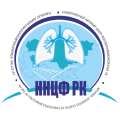Received: 17.10.2024 Accepted: 27.11.2024 Published online: 30.12.2024
DOI: 10.26212/2227-1937.2025.84.83.020
УДК: 616.24-002:616.61-008
РULMONARY-RENAL INTERACTIONS IN CHRONIC LUNG DISEASES – CURRENT STATE OF THE PROBLEM
L.K. Ibrayeva 1, ORCID https://orcid.org/0000-0002-9917-0258
O.S. Klassen 2, ORCID https://orcid.org/0000-0002-9267-2968
A.R. Alina 1, ORCID https://orcid.org/0000-0002-3229-1506
I.V. Bacheva 1, ORCID https://orcid.org/0000-0002-5576-8637,
A.A. Nygimetova 3, ORCID https://orcid.org/0009-0004-5985-6257
¹Department of Internal Medicine, Karaganda Medical University, Karaganda, Kazakhstan
2Institute of Life Sciences, Karaganda Medical University, Karaganda, Kazakhstan
3Pulmonology Department, Regional Clinical Hospital, Karaganda, Kazakhstan
Corresponding author: Olga Klassen. E-mail: klassen_os@mail.ru. ORCID: 0009-0004-5985-6257
Resume: The first quarter of the 21st century is nearly complete, and the medical community increasingly faces the
challenges of global population aging and the steady rise in chronic disease prevalence. It is evident that the complete or
partial loss of function in one organ affects the status of others. The kidneys and lungs jointly regulate fluid homeostasis, acidbase balance, immune response, and the production of biologically active molecules. For instance, renal insufficiency leads to
fluid overload and hypertension, thereby exacerbating disease severity and increasing mortality in patients with chronic lung
diseases, such as interstitial lung diseases and COPD. At the same time, chronic lung diseases significantly affect kidney
health, both through hypoxia and nephrotoxic effects of treatments. Rheumatic diseases, such as systemic sclerosis, should be
specifically highlighted, as fibrosis develops in both organs. Understanding inter-organ interactions is crucial for preventing
complications and improving survival. These factors underscore the necessity of recognizing these interrelations when
selecting treatment strategies. Ideally, a multidisciplinary approach should be employed, involving specialists in
pulmonology, nephrology, and rheumatology. Collaborative efforts will enable proper treatment, timely detection, and
prevention of complications. Applying knowledge of inter-organ relationships will not only improve the quality of medical
care but also reduce the financial burden on the healthcare system. This review attempts to describe the mechanisms linking
kidney damage and pulmonary dysfunction, with a focus on chronic kidney disease (CKD) and its impact on lung health. It
emphasizes the importance of early detection of CKD and outlines potential biomarkers for assessing damage to both organs,
as well as therapeutic targets.
The search was conducted in electronic databases such as Scopus, Web of Science, PubMed, and Google Scholar, using
relevant keywords: «COPD and CKD,» «ILD and CKD», «Kidney function and lung function,» «Renal dysfunction and respiratory
failure.» The search span was 15 years, from 2009 to 2024, and included only open-access articles in English, encompassing
all types of studies, focusing solely on adults and animal studies. Pediatric studies were excluded from consideration.
Key words: Pulmorenal Syndrome, Chronic Lung Diseases, Pulmonary Fibrosis, Chronic Kidney Disease, Renal Dysfunction
